Data captured via the Self Reporting Tool
The information captured is visualised as KPIs and available for download and further analysis via this page.
The information reported will provide stakeholders with information that is monitored under real conditions, allowing them to obtain first-hand information to foster replication.
Background information on the KPIs can be found as part of the smart city project monitoring guidance provided here.
Trends in the data captured
Between 2010 and 2022, the data captured via SRT shows some trends, sometimes clear, frequently not so clear. Possible causes are that, over time, the focus of the awarded projects changes from work program to work program and that the portfolio of the demonstration buildings (residential, tertiary or industrial) is variable:
Energy consumption with renewable energy taken into account (this means that, after subtraction of the local renewable energy, the net energy consumption of buildings is less than shown here. (Final energy reflects mainly the building quality (insulation, glazing etc.):

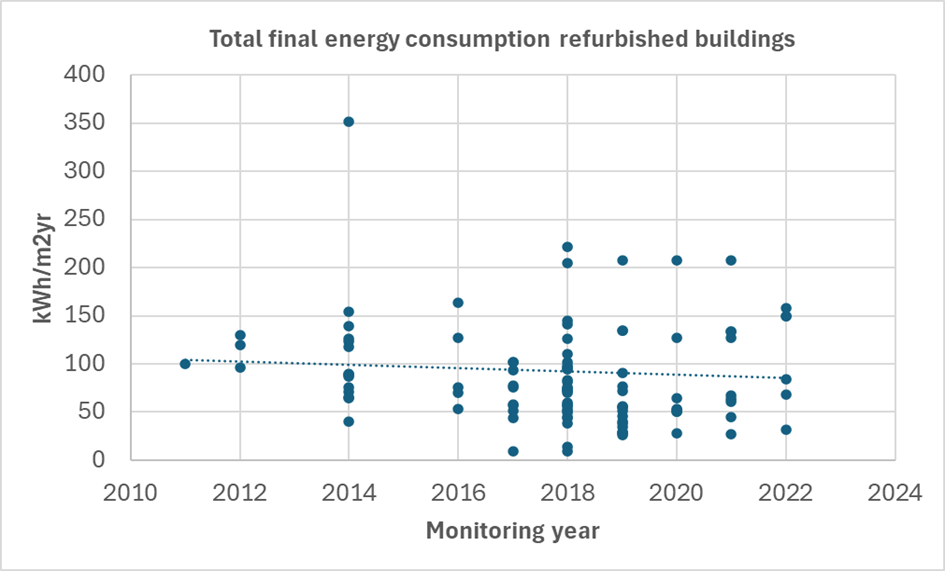
Primary energy demand

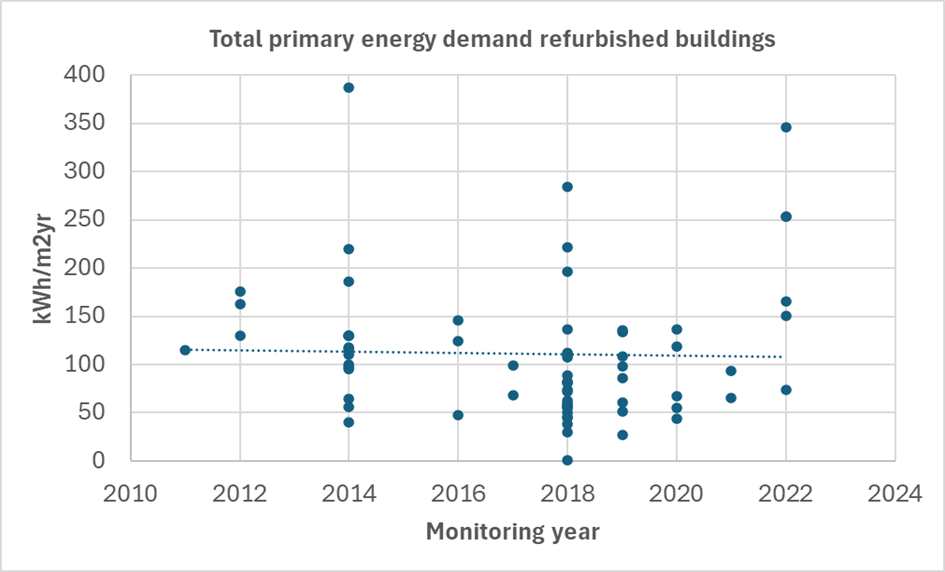
Share of local renewable energy

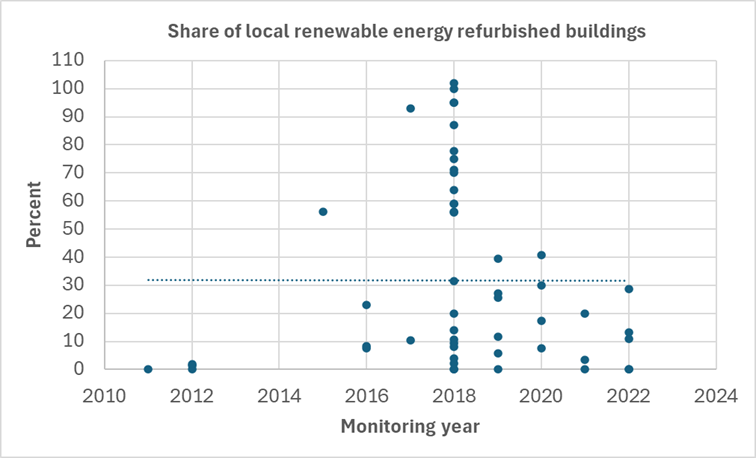
CO2 reduction per m2 of buildings: CO2 emission

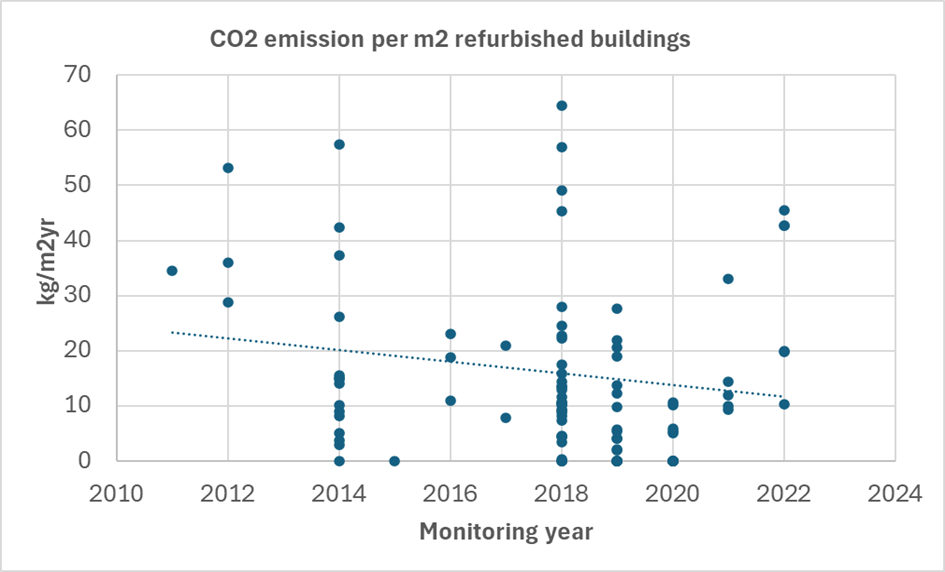
CO2 reduction per m2 of buildings: savings
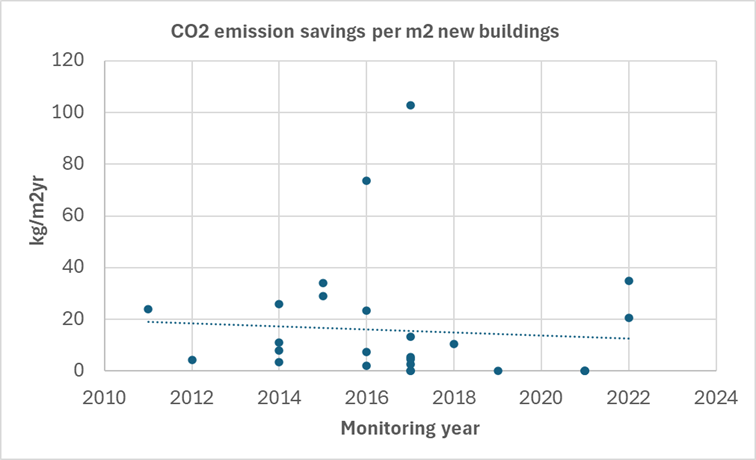
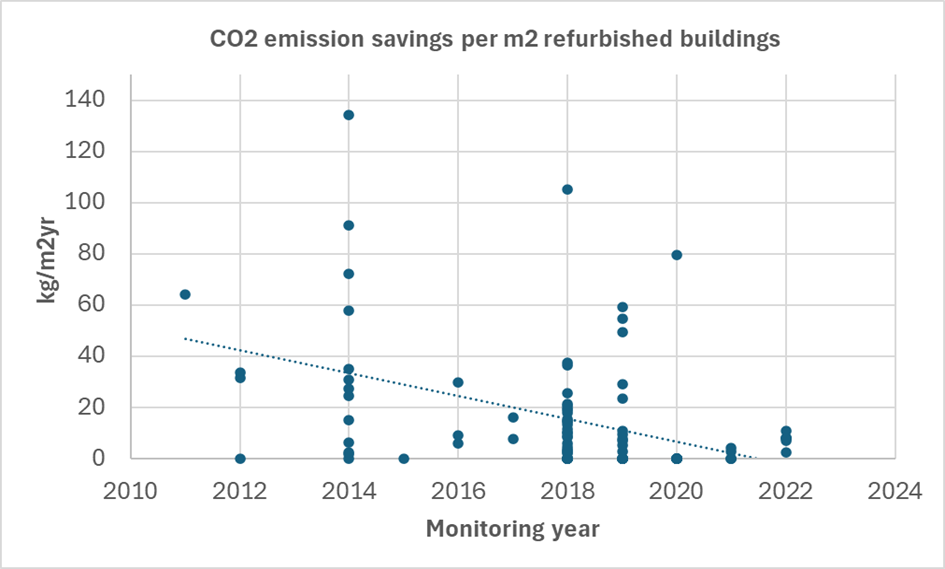
For data related to projects in ICT and Transport and Mobility, for which so far data have only been collected over a short timespan, a summary table is shown below.

